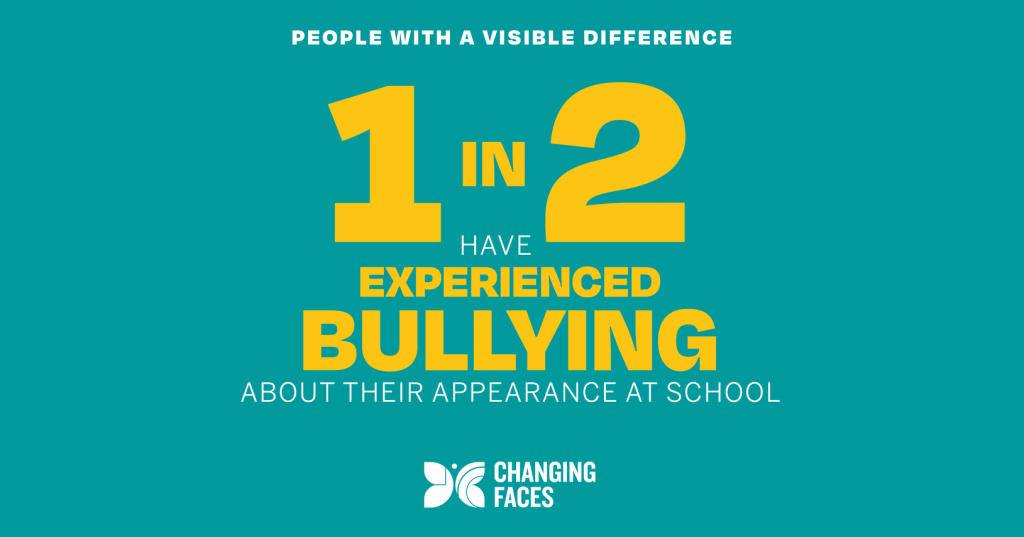Preventing appearance-based discrimination in schools
Education professionals have a key role to play in supporting young people with a visible difference and creating an inclusive environment for all pupils.
Research-based anti-bullying guidelines to help you create an inclusive and welcoming environment for students with a visible difference.
Your school will already have an anti-bullying policy. However, it’s important to ensure that the issues faced by children and young people who have a visible difference are included.
The advice and suggestions on this page are based on research findings and experience of working with children and young people.
We hope this will help schools foster a positive and inclusive school experience for all children and young people, and help ensure your school’s anti-bullying policy supports pupils with a visible difference.

First take a look at this video, which features young people with a visible difference talking about their experiences of bullying:
To ensure your anti-bullying policy support students with a visible difference, follow the guidelines below:
Theories on prevention and effective responses to bullying in schools is a vast research area. Below are some key research findings that are especially relevant for preventing and addressing bullying that targets a child’s unusual appearance. This evidence base can be used to support your anti-bullying policy.
You may wish to refer to or contact the other organisations listed below when developing your anti-bullying policy.
Education professionals have a key role to play in supporting young people with a visible difference and creating an inclusive environment for all pupils.
People who look different sometimes experience bullying. We share some advice on how to stop this from happening to you.